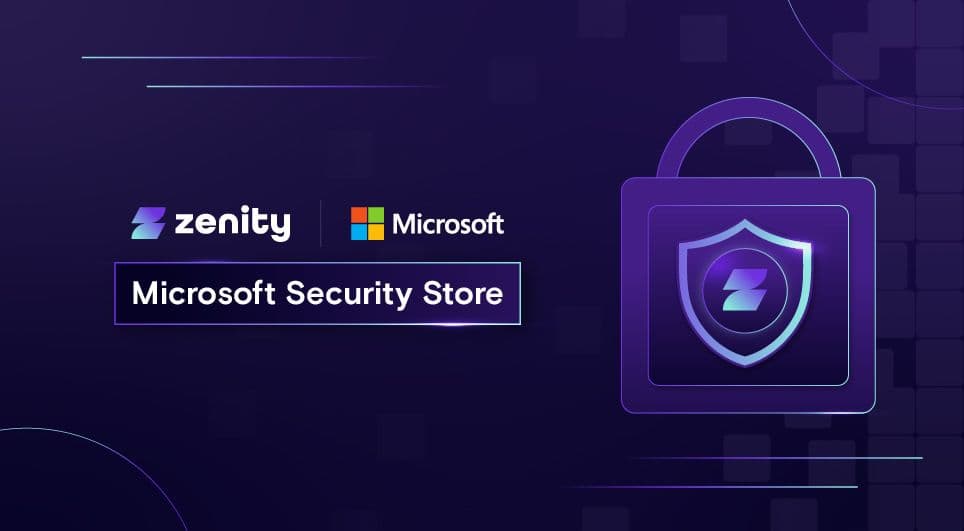Enhancing Security in Low-Code Development: Tools and Techniques

Low-code development platforms have revolutionized the way organizations build and deploy applications by enabling rapid innovation and empowering citizen developers. However, this democratization of app creation brings new security challenges that traditional security approaches struggle to address. As businesses increasingly rely on low-code solutions, automating security becomes crucial to maintain an adequate defense against evolving threats.
Automated Security: A Necessity for Low-Code Environments
Automated security tools and techniques offer a solution to the unique challenges posed by low-code development. By integrating security measures directly into the development process, organizations can protect themselves without sacrificing the speed and agility that make low-code platforms so powerful.
Automation lets organizations apply security best practices consistently across all low-code projects, regardless of the developer’s expertise. It also enables real-time vulnerability detection and mitigation, reducing the risk of security issues that might otherwise infiltrate production environments.
So how does an organization go about integrating automation into their security practices? Let’s take a look at a few tools and techniques for automating security in low-code development:
1. Continuous Scanning and Vulnerability Assessment
Implementing continuous scanning tools is crucial for identifying potential security issues early in the development process. These tools can automatically analyze low-code applications for common vulnerabilities, misconfigurations, and compliance violations.
Advanced scanning solutions go beyond surface-level checks, examining the underlying components and integrations that make up low-code apps. This comprehensive approach helps uncover hidden vulnerabilities that might otherwise go unnoticed.
For instance, a robust scanning tool might detect:
- Insecure data handling practices
- Weak authentication mechanisms
- Excessive permissions granted to apps and agents
- Potential data leakage points
By automating these scans, security teams can focus on addressing identified issues rather than manually searching for vulnerabilities across numerous low-code projects.
2. Automated Policy Enforcement
Establishing and enforcing security policies is essential for maintaining a consistent security posture across low-code development efforts. Automated policy enforcement tools can help organizations implement and maintain these standards for thousands of citizen developers without manual intervention.
These tools should be able to integrate directly with low-code platforms, applying predefined security rules and best practices as developers build their applications. For example, an automated policy enforcement system might:
- Restrict the use of certain components or integrations known to have security risks
- Detect and prevent misconfigurations that could expose sensitive data to unauthorized users
- Ensure compliance with regulatory requirements like GDPR, FDIC or HIPAA
- Mandate the implementation of specific security controls based on the app’s purpose or data sensitivity
By automating policy enforcement, organizations can ensure that even citizen developers with limited security knowledge create applications that adhere to corporate security standards.
3. Threat Detection
Artificial intelligence and machine learning technologies are increasingly being leveraged to enhance security automation in low-code environments. However, threat modeling, particularly in the age of AI is critical and this means setting up proper AppSec controls. Threat detection systems can analyze patterns and behaviors within low-code applications to identify potential security risks that might elude traditional rule-based approaches.
These advanced systems can:
- Detect anomalous data access patterns that might indicate a breach
- Identify unusual app configurations that could introduce vulnerabilities
- Predict potential security issues based on historical data and current app characteristics
- Adapt to new threat patterns and evolving attack techniques
By incorporating AI-driven threat detection, organizations can stay ahead of emerging security challenges in the rapidly evolving low-code landscape.
4. Security Controls for Individual Apps
In low-code environments, it’s crucial to implement security controls that cover each individual app, agent, automation, and workflow. Automation plays a key role in making these app-specific security measures possible, allowing for real-time analysis and adjustment of security controls at scale. This approach involves:
- Analyzing the app’s business context and logic to determine appropriate security measures
- Implementing access controls based on the specific functions and data within each app
- Continuously monitoring app usage patterns to detect potential security risks
- Adjusting security settings in real-time as the app’s purpose or data sensitivity changes
By leveraging automation to implement these tailored security controls, organizations can maintain a strong security posture across their entire portfolio of low-code applications without sacrificing speed and flexibility.
5. Real-Time Security Validation During Building
In low-code environments, the focus is on ensuring security without hindering productivity. With automated continuous monitoring, potential misconfigurations or security risks can be identified and eliminated as they occur.
Automated security checks provide immediate feedback to app builders, helping them address security concerns on the fly and reducing the likelihood of vulnerabilities making their way into the finished application. This approach ensures that security is woven into the fabric of low-code app development, maintaining a balance between robust protection and the agility that makes low-code platforms so valuable to businesses.
6. Automated Compliance Monitoring and Reporting
For many organizations, ensuring compliance with industry regulations and standards is a critical aspect of application security. Automated compliance monitoring and reporting tools can significantly reduce the burden of maintaining and demonstrating compliance in low-code environments.
Automated compliance monitoring and reporting tools offer a suite of features designed to streamline regulatory adherence in low-code environments. These systems provide real-time compliance status monitoring and automate the generation of compliance reports for audits and assessments, significantly reducing the manual effort typically associated with these tasks.
During development, these tools can also issue alerts for potential compliance violations, enabling proactive resolution of issues before they impact production environments. By automating these critical compliance processes, organizations gain a clear, up-to-date view of their regulatory standing, allowing them to swiftly address any issues that emerge and maintain a robust compliance posture in their rapidly evolving low-code landscape.
Best Practices for Successful Security Automation in Low-Code
To maximize the benefits of automated security in low-code environments, consider the following best practices. By following these guidelines, businesses can create a more secure, efficient, and compliant low-code ecosystem.
- Start with a comprehensive security assessment of your low-code environment to identify specific needs and vulnerabilities.
- Implement automation gradually, beginning with high-impact, low-complexity areas to demonstrate value and build user acceptance.
- Provide ongoing training and support for both professional and citizen developers to ensure they understand and can effectively use low-code tools in accordance with corporate policy
- Regularly review and update automated security policies and rules to adapt to evolving threats and changing business needs.
- Foster collaboration between security teams, IT departments, and business users to ensure automated security measures align with both technical requirements and business objectives.
- Leverage platforms that offer centralized visibility and control over low-code app security, enabling efficient management of automated security across the organization.
Embracing Automated Security: The Key to Unlocking Low-Code Potential
Automating security in low-code development is not just a convenience—it’s a necessity for organizations looking to leverage the power of low-code platforms while maintaining robust security postures. By implementing the right mix of automated tools and techniques, businesses can empower their teams to create innovative applications rapidly without compromising on security.
As low-code platforms continue to evolve and proliferate, the importance of automated security measures will only grow. Organizations that invest in these capabilities now will be well-positioned to navigate the complex security landscape of the future, ensuring their low-code initiatives remain both agile and secure.
By embracing automated security in low-code development, businesses can unlock the full potential of these powerful platforms while maintaining the trust and confidence of their users and stakeholders. In an era where digital innovation and security must go hand in hand, automation provides the key to achieving this crucial balance.Ready to enhance your low-code security with automation? Schedule a demo now.
All ArticlesRelated blog posts

Demystifying AI Agent Security
Let me be the first to say it, this space - AI agent security and governance - can be confusing. When I joined...

Zenity Joins the Microsoft Security Store: Securing AI Agents Everywhere, Together
We’re thrilled to share that Zenity is included in the unveiling of the Microsoft Security Store Partner Ecosystem....

0Click Attacks: When TTPs Resurface Across Platforms
If there’s one lesson security teams should take from recent disclosures, it’s this: AI agent attack techniques...
Secure Your Agents
We’d love to chat with you about how your team can secure and govern AI Agents everywhere.
Get a Demo